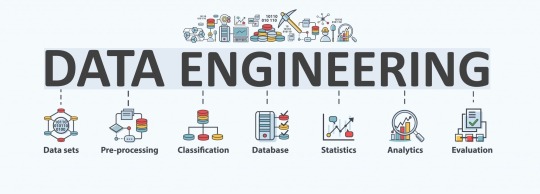#introduction to web application development
Explore tagged Tumblr posts
Text
Borderless Technology Talent: A Boon or Bane for the Company?
Due to an expanding economy and budget cuts, leading companies are actively searching for ways to bolster their talent pool and combat shortages of talent and diversity through borderless hiring strategies. This method allows organizations to expand their search beyond their immediate location or geographic region to locate top talent. The new hybrid working model is also invaluable in supporting borderless hiring. Employees can still work from home or the office on certain days, increasing productivity while encouraging companies to hire top talent from around the globe. Gartner Inc.'s survey revealed that 58% of companies are interested in hiring tech-savvy employees remotely and employing borderless technology talent remotely. This number has doubled over the past three years due to the COVID-19 pandemic.
Visit us:
#A Boon or Bane for the Company#supporting borderless hiring#website redesign services#website design services#ios app development#introduction to web application development#roadmap for react native developer#what is the relation between mis & enterprise resource planning?#android go edition vs android
0 notes
Text

From Knots to Quantum: A Cultural and Mathematical Transformation
Shiing-Shen Chern was born in Jiaxing, China, in 1911, during a time of great change and upheaval in his homeland. From an early age, he displayed a remarkable aptitude for mathematics, and his journey in the world of differential geometry began at Nankai University and Tsinghua University, where he laid the foundation for his future academic endeavors. Chern's education took him to Germany, where he pursued his graduate studies at the University of Hamburg under the mentorship of Wilhelm Blaschke. It was here that Chern's passion for geometry flourished, and his doctoral research on the theory of webs marked the beginning of a brilliant career in mathematics.
Chern's contributions to differential geometry are vast and profound. He made significant advancements in the calculus of variations, the theory of differential forms, and the study of characteristic classes. His most celebrated achievement, the Chern-Weil theory, provides a powerful framework for constructing and understanding characteristic classes, which are essential tools in algebraic topology and differential geometry. The introduction of Chern classes revolutionized the study of complex manifolds and algebraic varieties. These classes capture the topological and geometric intricacies of these spaces and have become indispensable in various branches of mathematics. Chern's proof of the generalized Gauss-Bonnet theorem further solidified his place among the greatest geometers.
Beyond his mathematical prowess, Shiing-Shen Chern played a pivotal role in fostering mathematical exchange and collaboration between China and the Western world. In the mid-20th century, as China emerged from a period of isolation, Chern became a key figure in re-establishing mathematical connections with the international community. Upon his return to China in the 1980s, he took on the task of revitalizing mathematical research and education. Chern founded the Mathematical Research Institute of the Chinese Academy of Sciences, which became a hub for mathematical excellence and international collaboration. His vision and leadership attracted mathematicians from around the world, fostering a vibrant and diverse intellectual environment.
Chern's dedication to nurturing the next generation of mathematicians is evident in his establishment of the Nankai Institute of Mathematics at Nankai University and his later contributions to Zhejiang University. Through these institutions, he inspired and mentored countless students, many of whom became leading mathematicians.
Shiing-Shen Chern's influence extends far beyond pure mathematics, significantly impacting the field of Topological Quantum Theory (TQFT). TQFT is a fascinating area of mathematical physics that explores the connections between topology, geometry, and quantum mechanics, and Chern's contributions have been instrumental in its development.
Chern-Simons theory stands as a testament to the deep interplay between geometry and quantum theory. Named after Shiing-Shen Chern, Simon Donaldson, and James Simons, this topological quantum field theory is a masterpiece in mathematical physics. Chern-Simons theory assigns complex amplitudes to manifolds and knots, relying on the Chern-Simons form, a differential form derived from the curvature of connections on principal bundles. The Chern-Simons action functional, a central object in the theory, captures the geometric and topological aspects of manifolds, providing a powerful tool for understanding quantum systems. This theory finds applications in various areas of physics, including knot theory, quantum gravity, and condensed matter physics, offering insights into topological phases of matter.
Chern's work on characteristic classes, particularly the Chern classes, has been instrumental in the study of topological invariants, which are crucial in TQFT. These invariants remain unchanged under continuous deformations of manifolds and play a vital role in classifying topological phases. Chern classes, along with other characteristic classes, provide a rich toolkit for constructing and analyzing these topological invariants. The Chern-Simons invariant, derived from Chern-Simons theory, is a prime example with far-reaching implications. It distinguishes different 3-manifolds and connects to knot invariants like the Jones polynomial, which are of great interest in TQFT.
Chern's contributions to differential geometry have also influenced the study of quantum states and their geometric properties. The geometry of the space of quantum states, known as the projective Hilbert space, has become an important research area in mathematical physics. Chern's work on complex geometry and Kähler manifolds provides valuable insights into the structure of these spaces and their associated geometric invariants. Additionally, the concept of Berry phases in quantum mechanics, arising from the geometric properties of quantum state spaces, is connected to Chern's work on connections and curvature. These geometric phases find applications in quantum computing and quantum information theory.
The interplay of mathematics, history, and cultural exchange is captured in the documentary "Taking the Long View" by George Paul Csicsery. The film portrays Chern's life, his enduring legacy, and the tapestry of his contributions to mathematics and the cultural exchange between East and West.
Taking the Long View - The Life of Shiing-shen Chern (George Paul Csicsery, 2000)
youtube
Knots have been an integral part of human civilization for thousands of years, dating back to ancient times when they were used for practical purposes such as sailing, fishing, and weaving. However, the systematic study of knots as a mathematical discipline is a relatively modern development that has evolved over the centuries, intertwining with various scientific and intellectual pursuits.
In ancient civilizations like Egypt, Greece, and China, knots were used for practical purposes, such as securing objects, creating fishing nets, and recording information. The ancient Inca civilization in South America even developed a sophisticated system of recording information called "quipu," which used knotted strings to encode numerical data and possibly even more complex information.
During the Renaissance, knots continued to play a role in various crafts and trades, but the mathematical study of knots as a distinct field was not yet established..
The 19th century saw significant advancements in mathematics and physics, and it was during this time that knot theory began to take shape as a mathematical discipline. One of the pioneering figures in this field was the Scottish physicist and mathematician Peter Guthrie Tait. In the 1870s, Tait and his colleagues, including Thomas Kirkman and C.N. Little, embarked on a project to classify all possible knots with a given number of crossings. This effort, known as the "Tait Conjecture," aimed to create a table of knots and links, which would serve as a foundation for understanding their properties.
Tait's work laid the groundwork for the systematic study of knots, and he is often considered one of the founders of knot theory. He introduced the concept of "alternating knots" and developed techniques for distinguishing and classifying knots based on their diagrams.
In the early 20th century, mathematicians continued to build upon Tait's work and made significant contributions to knot theory. James Waddell Alexander II, a prominent American mathematician, introduced the concept of "knot invariants," which are mathematical quantities that remain unchanged under various deformations of a knot. These invariants provided a powerful tool for distinguishing and classifying knots.
Another influential figure during this period was Max Dehn, a German mathematician who made important contributions to the study of three-dimensional manifolds and knot theory. Dehn introduced the concept of "Dehn surgery," a technique for modifying three-dimensional spaces by cutting out and gluing back solid tori, which has deep connections with knot complements and the topology of three-dimensional spaces.
The mid-20th century witnessed a revolution in physics with the development of quantum mechanics. Surprisingly, this new branch of physics would have profound implications for knot theory. In the 1980s, the discovery of the Jones polynomial by Vaughan Jones, a mathematician working in the field of operator algebras, marked a significant turning point.
The Jones polynomial is a knot invariant that assigns a Laurent polynomial to each knot or link. It was initially discovered in the context of von Neumann algebras and subfactors in quantum physics, but its significance for knot theory was quickly recognized. The Jones polynomial provided a powerful tool for distinguishing knots and led to the development of other knot polynomials, such as the HOMFLYPT polynomial, which further enriched the theory.
The connection between knot theory and quantum physics deepened with the emergence of topological quantum field theories, mathematical models that describe the behavior of quantum systems in terms of topological and geometric properties. Edward Witten played a pivotal role in this development.
Edward Witten's foray into knot theory began in the late 1980s, a period marked by significant advancements in mathematical physics. Witten, already renowned for his contributions to string theory and quantum field theory, turned his attention to the intricate world of knots and links, seeking to understand their topological and geometric properties. Witten's interest in knot theory was not merely academic; he sought to uncover the deep connections between knot theory and quantum physics.
Shiing-Shen Chern's work in differential geometry and topology provided a crucial foundation for Witten's exploration of knot theory. Witten's groundbreaking insight was to relate Chern-Simons theory to knot invariants, such as the Jones polynomial. He showed that the Jones polynomial could be obtained from Chern-Simons theory, providing a physical interpretation for this important mathematical object.
Witten's exploration of knot theory has led to a deeper understanding of the role of knots and links in quantum field theory. He has studied the behavior of quantum fields in the presence of knotted configurations, revealing the intricate interplay between topology and quantum phenomena. This research has opened up new avenues for understanding the mathematical structure of quantum field theories and their connection to knot invariants.
Witten's research has explored the geometry of quantum state spaces, known as projective Hilbert spaces. He has used geometric and topological concepts, such as Kähler manifolds and Berry phases, to understand the structure and behavior of quantum systems in these spaces. This work builds upon Chern's contributions to differential geometry and topology, particularly in the study of complex manifolds and their geometric properties.
By building upon Chern's mathematical foundations, Witten has revealed the deep connections between geometry, topology, and quantum phenomena, opening up new avenues for research and a deeper understanding of the mathematical structure of the physical world.
Prof. Edward Witten: Knots and Quantum Theory (Institute for Advanced Study, April 2012)
youtube
Wednesday, October 9, 2024
10 notes
·
View notes
Text
The Hidden Power of Local Directories in Boosting Your Clinic’s Search Rankings
Introduction
In precise this second’s digital panorama, seo for beauty industry through which sufferers are increasingly turning to on-line assets to in finding aesthetic clinics, realizing the nuances of site positioning (internet optimization) has certainly not been higher quintessential. One extra regularly than not overpassed but effective application in this enviornment is within sight directories. This article delves into The Hidden Power of Local Directories in Boosting Your Clinic’s Search Rankings, demonstrating how they are in a position to raise your aesthetic clinic's on-line presence and affected person inquiries.
internet optimization Agency for Aesthetic Clinics What is web page positioning for Aesthetic Clinics?
net optimization for complicated clinics comes to optimizing your online presence to development visibility on engines like google like google and yahoo like Google. It encompasses different treatments, including key-phrase examine, content cloth creation, technical web optimization, and extra. By focusing on these areas, clinics can lure more advantageous particular web site guests and convert knowledge sufferers into bookings.
Why Local net optimization is Essential
Local web content positioning notably desires clients inside of a geographic domain, making it paramount for complicated clinics that depend closely on neighborhood customers. When competencies sufferers search for purposes like “lip fillers” or “facial innovations,” they probably include place-relying words. Thus, optimizing your health facility for regional searches can radically escalate your visibility and enlarge affected someone inquiries.
Understanding Local Directories What Are Local Directories?
Local directories are systems whereby companies can document their services which include integral knowledge inclusive of deal with, phone number, information superhighway content material hyperlink, and shopper evaluations. Common examples include Yelp, Google My Business (GMB), and Healthgrades.

youtube

How Do They Work?
These directories combo information roughly neighborhood vendors to help customers in finding imperative products and services within sight. When anyone searches for a classy medication in their neighborhood, search engines like google and yahoo prioritize listings from the ones directories truly by their credibility and relevance.
The Importance of Consistent NAP Information What is NAP?
NAP stands for Name, Address, and Phone Number. Having steady NAP documents in the time of all directories is prevalent for within sight website positioning. Inconsistent facts can confuse search engines like google and result in scale down ratings.

How to Ensure NAP Consistency Audit All Listings: Check all directory listings to confirm the information is good. Update Regularly: If you adjust areas or touch important points, replace them across all structures instantaneous. Use Structured Data Markup: Implement schema markup on your internet content material to help se's realise your commercial archives higher. Benefits of Listing in Local Directories Increased Visibility
Being indexed in diverse local directories raises the ch
2 notes
·
View notes
Text
This Week in Rust 593
Hello and welcome to another issue of This Week in Rust! Rust is a programming language empowering everyone to build reliable and efficient software. This is a weekly summary of its progress and community. Want something mentioned? Tag us at @ThisWeekInRust on X (formerly Twitter) or @ThisWeekinRust on mastodon.social, or send us a pull request. Want to get involved? We love contributions.
This Week in Rust is openly developed on GitHub and archives can be viewed at this-week-in-rust.org. If you find any errors in this week's issue, please submit a PR.
Want TWIR in your inbox? Subscribe here.
Updates from Rust Community
Newsletters
The Embedded Rustacean Issue #42
This Week in Bevy - 2025-03-31
Project/Tooling Updates
Fjall 2.8
EtherCrab, the pure Rust EtherCAT MainDevice, version 0.6 released
A process for handling Rust code in the core kernel
api-version: axum middleware for header based version selection
SALT: a VS Code Extension, seeking participants in a study on Rust usabilty
Observations/Thoughts
Introducing Stringleton
Rust Any Part 3: Finally we have Upcasts
Towards fearless SIMD, 7 years later
LLDB's TypeSystems: An Unfinished Interface
Mutation Testing in Rust
Embedding shared objects in Rust
Rust Walkthroughs
Architecting and building medium-sized web services in Rust with Axum, SQLx and PostgreSQL
Solving the ABA Problem in Rust with Hazard Pointers
Building a CoAP application on Ariel OS
How to Optimize your Rust Program for Slowness: Write a Short Program That Finishes After the Universe Dies
Inside ScyllaDB Rust Driver 1.0: A Fully Async Shard-Aware CQL Driver Using Tokio
Building a search engine from scratch, in Rust: part 2
Introduction to Monoio: A High-Performance Rust Runtime
Getting started with Rust on Google Cloud
Miscellaneous
An AlphaStation's SROM
Real-World Verification of Software for Cryptographic Applications
Public mdBooks
[video] Networking in Bevy with ECS replication - Hennadii
[video] Intermediate Representations for Reactive Structures - Pete
Crate of the Week
This week's crate is candystore, a fast, persistent key-value store that does not require LSM or WALs.
Thanks to Tomer Filiba for the self-suggestion!
Please submit your suggestions and votes for next week!
Calls for Testing
An important step for RFC implementation is for people to experiment with the implementation and give feedback, especially before stabilization.
If you are a feature implementer and would like your RFC to appear in this list, add a call-for-testing label to your RFC along with a comment providing testing instructions and/or guidance on which aspect(s) of the feature need testing.
No calls for testing were issued this week by Rust, Rust language RFCs or Rustup.
Let us know if you would like your feature to be tracked as a part of this list.
Call for Participation; projects and speakers
CFP - Projects
Always wanted to contribute to open-source projects but did not know where to start? Every week we highlight some tasks from the Rust community for you to pick and get started!
Some of these tasks may also have mentors available, visit the task page for more information.
If you are a Rust project owner and are looking for contributors, please submit tasks here or through a PR to TWiR or by reaching out on X (formerly Twitter) or Mastodon!
CFP - Events
Are you a new or experienced speaker looking for a place to share something cool? This section highlights events that are being planned and are accepting submissions to join their event as a speaker.
* Rust Conf 2025 Call for Speakers | Closes 2025-04-29 11:59 PM PDT | Seattle, WA, US | 2025-09-02 - 2025-09-05
If you are an event organizer hoping to expand the reach of your event, please submit a link to the website through a PR to TWiR or by reaching out on X (formerly Twitter) or Mastodon!
Updates from the Rust Project
438 pull requests were merged in the last week
Compiler
allow defining opaques in statics and consts
avoid wrapping constant allocations in packed structs when not necessary
perform less decoding if it has the same syntax context
stabilize precise_capturing_in_traits
uplift clippy::invalid_null_ptr_usage lint as invalid_null_arguments
Library
allow spawning threads after TLS destruction
override PartialOrd methods for bool
simplify expansion for format_args!()
stabilize const_cell
Rustdoc
greatly simplify doctest parsing and information extraction
rearrange Item/ItemInner
Clippy
new lint: char_indices_as_byte_indices
add manual_dangling_ptr lint
respect #[expect] and #[allow] within function bodies for missing_panics_doc
do not make incomplete or invalid suggestions
do not warn about shadowing in a destructuring assigment
expand obfuscated_if_else to support {then(), then_some()}.unwrap_or_default()
fix the primary span of redundant_pub_crate when flagging nameless items
fix option_if_let_else suggestion when coercion requires explicit cast
fix unnested_or_patterns suggestion in let
make collapsible_if recognize the let_chains feature
make missing_const_for_fn operate on non-optimized MIR
more natural suggestions for cmp_owned
collapsible_if: prevent including preceeding whitespaces if line contains non blanks
properly handle expansion in single_match
validate paths in disallowed_* configurations
Rust-Analyzer
allow crate authors to control completion of their things
avoid relying on block_def_map() needlessly
fix debug sourceFileMap when using cppvsdbg
fix format_args lowering using wrong integer suffix
fix a bug in orphan rules calculation
fix panic in progress due to splitting unicode incorrectly
use medium durability for crate-graph changes, high for library source files
Rust Compiler Performance Triage
Positive week, with a lot of primary improvements and just a few secondary regressions. Single big regression got reverted.
Triage done by @panstromek. Revision range: 4510e86a..2ea33b59
Summary:
(instructions:u) mean range count Regressions ❌ (primary) - - 0 Regressions ❌ (secondary) 0.9% [0.2%, 1.5%] 17 Improvements ✅ (primary) -0.4% [-4.5%, -0.1%] 136 Improvements ✅ (secondary) -0.6% [-3.2%, -0.1%] 59 All ❌✅ (primary) -0.4% [-4.5%, -0.1%] 136
Full report here.
Approved RFCs
Changes to Rust follow the Rust RFC (request for comments) process. These are the RFCs that were approved for implementation this week:
No RFCs were approved this week.
Final Comment Period
Every week, the team announces the 'final comment period' for RFCs and key PRs which are reaching a decision. Express your opinions now.
Tracking Issues & PRs
Rust
Tracking Issue for slice::array_chunks
Stabilize cfg_boolean_literals
Promise array::from_fn is generated in order of increasing indices
Stabilize repr128
Stabilize naked_functions
Fix missing const for inherent pointer replace methods
Rust RFCs
core::marker::NoCell in bounds (previously known an [sic] Freeze)
Cargo,
Stabilize automatic garbage collection.
Other Areas
No Items entered Final Comment Period this week for Language Team, Language Reference or Unsafe Code Guidelines.
Let us know if you would like your PRs, Tracking Issues or RFCs to be tracked as a part of this list.
New and Updated RFCs
Allow &&, ||, and ! in cfg
Upcoming Events
Rusty Events between 2025-04-02 - 2025-04-30 🦀
Virtual
2025-04-02 | Virtual (Indianapolis, IN, US) | Indy Rust
Indy.rs - with Social Distancing
2025-04-03 | Virtual (Nürnberg, DE) | Rust Nurnberg DE
Rust Nürnberg online
2025-04-03 | Virtual | Ardan Labs
Communicate with Channels in Rust
2025-04-05 | Virtual (Kampala, UG) | Rust Circle Meetup
Rust Circle Meetup
2025-04-08 | Virtual (Dallas, TX, US) | Dallas Rust User Meetup
Second Tuesday
2025-04-10 | Virtual (Berlin, DE) | Rust Berlin
Rust Hack and Learn
2025-04-15 | Virtual (Washington, DC, US) | Rust DC
Mid-month Rustful
2025-04-16 | Virtual (Vancouver, BC, CA) | Vancouver Rust
Rust Study/Hack/Hang-out
2025-04-17 | Virtual and In-Person (Redmond, WA, US) | Seattle Rust User Group
April, 2025 SRUG (Seattle Rust User Group) Meetup
2025-04-22 | Virtual (Dallas, TX, US) | Dallas Rust User Meetup
Fourth Tuesday
2025-04-23 | Virtual (Cardiff, UK) | Rust and C++ Cardiff
**Beyond embedded - OS development in Rust **
2025-04-24 | Virtual (Berlin, DE) | Rust Berlin
Rust Hack and Learn
2025-04-24 | Virtual (Charlottesville, VA, US) | Charlottesville Rust Meetup
Part 2: Quantum Computers Can’t Rust-Proof This!"
Asia
2025-04-05 | Bangalore/Bengaluru, IN | Rust Bangalore
April 2025 Rustacean meetup
2025-04-22 | Tel Aviv-Yafo, IL | Rust 🦀 TLV
In person Rust April 2025 at Braavos in Tel Aviv in collaboration with StarkWare
Europe
2025-04-02 | Cambridge, UK | Cambridge Rust Meetup
Monthly Rust Meetup
2025-04-02 | Köln, DE | Rust Cologne
Rust in April: Rust Embedded, Show and Tell
2025-04-02 | München, DE | Rust Munich
Rust Munich 2025 / 1 - hybrid
2025-04-02 | Oxford, UK | Oxford Rust Meetup Group
Oxford Rust and C++ social
2025-04-02 | Stockholm, SE | Stockholm Rust
Rust Meetup @Funnel
2025-04-03 | Oslo, NO | Rust Oslo
Rust Hack'n'Learn at Kampen Bistro
2025-04-08 | Olomouc, CZ | Rust Moravia
3. Rust Moravia Meetup (Real Embedded Rust)
2025-04-09 | Girona, ES | Rust Girona
Rust Girona Hack & Learn 04 2025
2025-04-09 | Reading, UK | Reading Rust Workshop
Reading Rust Meetup
2025-04-10 | Karlsruhe, DE | Rust Hack & Learn Karlsruhe
Karlsruhe Rust Hack and Learn Meetup bei BlueYonder
2025-04-15 | Leipzig, DE | Rust - Modern Systems Programming in Leipzig
Topic TBD
2025-04-15 | London, UK | Women in Rust
WIR x WCC: Finding your voice in Tech
2025-04-19 | Istanbul, TR | Türkiye Rust Community
Rust Konf Türkiye
2025-04-23 | London, UK | London Rust Project Group
Fusing Python with Rust using raw C bindings
2025-04-24 | Aarhus, DK | Rust Aarhus
Talk Night at MFT Energy
2025-04-24 | Edinburgh, UK | Rust and Friends
Rust and Friends (evening pub)
2025-04-24 | Manchester, UK | Rust Manchester
Rust Manchester April Code Night
2025-04-25 | Edinburgh, UK | Rust and Friends
Rust and Friends (daytime coffee)
2025-04-29 | Paris, FR | Rust Paris
Rust meetup #76
North America
2025-04-03 | Chicago, IL, US | Chicago Rust Meetup
Rust Happy Hour
2025-04-03 | Montréal, QC, CA | Rust Montréal
April Monthly Social
2025-04-03 | Saint Louis, MO, US | STL Rust
icu4x - resource-constrained internationalization (i18n)
2025-04-06 | Boston, MA, US | Boston Rust Meetup
Kendall Rust Lunch, Apr 6
2025-04-08 | New York, NY, US | Rust NYC
Rust NYC: Building a full-text search Postgres extension in Rust
2025-04-10 | Portland, OR, US | PDXRust
TetaNES: A Vaccination for Rust—No Needle, Just the Borrow Checker
2025-04-14 | Boston, MA, US | Boston Rust Meetup
Coolidge Corner Brookline Rust Lunch, Apr 14
2025-04-17 | Nashville, TN, US | Music City Rust Developers
Using Rust For Web Series 1 : Why HTMX Is Bad
2025-04-17 | Redmond, WA, US | Seattle Rust User Group
April, 2025 SRUG (Seattle Rust User Group) Meetup
2025-04-23 | Austin, TX, US | Rust ATX
Rust Lunch - Fareground
2025-04-25 | Boston, MA, US | Boston Rust Meetup
Ball Square Rust Lunch, Apr 25
Oceania
2025-04-09 | Sydney, NS, AU | Rust Sydney
Crab 🦀 X 🕳️🐇
2025-04-14 | Christchurch, NZ | Christchurch Rust Meetup Group
Christchurch Rust Meetup
2025-04-22 | Barton, AC, AU | Canberra Rust User Group
April Meetup
South America
2025-04-03 | Buenos Aires, AR | Rust en Español
Abril - Lambdas y más!
If you are running a Rust event please add it to the calendar to get it mentioned here. Please remember to add a link to the event too. Email the Rust Community Team for access.
Jobs
Please see the latest Who's Hiring thread on r/rust
Quote of the Week
If you write a bug in your Rust program, Rust doesn’t blame you. Rust asks “how could the compiler have spotted that bug”.
– Ian Jackson blogging about Rust
Despite a lack of suggestions, llogiq is quite pleased with his choice.
Please submit quotes and vote for next week!
This Week in Rust is edited by: nellshamrell, llogiq, cdmistman, ericseppanen, extrawurst, U007D, joelmarcey, mariannegoldin, bennyvasquez, bdillo
Email list hosting is sponsored by The Rust Foundation
Discuss on r/rust
2 notes
·
View notes
Text
Introduction to SkillonIT Learning Hub- Empowering Rural Talent With World-Class IT Skills
SkillonIT provides IN-Demand IT courses, connecting Rural talent with rewarding IT skills through affordable, accessible and career-focused education. with Guaranteed pathways to internship and high paying jobs, start with us and step into Opportunities at top Tech-leading Companies. Skillonit Learning Hub, located in Buldhana, Maharashtra, is a leading institute dedicated to equipping individuals with cutting-edge technology skills. With a mission to bridge the digital divide, the institute provides high-quality education in various IT and professional development domains. Skillonit focuses on practical, industry-oriented training, ensuring students gain the expertise needed to thrive in today’s competitive job market. The hub is committed to empowering rural talent and shaping the next generation of skilled professionals.

Courses Offered Skillonit Learning Hub offers a diverse range of courses tailored to industry demands, enabling students to master both technical and professional skills.
Blockchain Development — Smart Contracts (Solidity, Rust, Web3.js, Hardhat) — Blockchain Protocols (Ethereum, Solana, Binance Smart Chain, Fantom) — Decentralized Applications (DApps) Development
Front-End Development — HTML, CSS, JavaScript — Frameworks: React.js, Vue.js, Angular — Responsive Web Design & UI Frameworks (Bootstrap, Tailwind CSS)
Back-End Development — Server-side Programming (Node.js, Python, PHP, Java, .NET) — Database Management (MySQL, MongoDB, Firebase, PostgreSQL) — API Development (RESTful APIs, GraphQL, WebSockets)
Full-Stack Development — Front-End + Back-End Integration — MERN Stack Development — Database, Deployment & DevOps Practice
Mobile App Development — Cross-Platform Development (Flutter, React Native)
Unity 3D Game Development — Game Mechanics & Physics — C# Programming for Game Development — Virtual Reality (VR) & Augmented Reality (AR) Integration
Professional UI/UX Design — User Interface Design (Adobe XD, Figma, Sketch) — User Experience Principles — Prototyping, Wireframing & Usability Testing
Professional Graphic Design — Adobe Photoshop, Illustrator, and CorelDraw — Branding & Logo Design — Digital Art & Visual Communication
Digital Marketing — SEO, SEM, and Social Media Marketing — Content Marketing & Copywriting — Google Ads, Facebook Ads & Analytics
Spoken English — Communication Skills & Public Speaking — Accent Training & Fluency Improvement
Personality Development — Business & Corporate Etiquette — Confidence Building & Interview Preparation — Leadership & Teamwork Skills
Location & Contact : Address : Chhatrapati Tower, Above Maratha Mahila Urban, 3rd Floor, Chikhali Road, Buldhana, Maharashtra, 443001.
Contact us
Conclusion : Skillonit Learning Hub is revolutionizing IT and professional education by making technology and essential career skills accessible to aspiring developers, designers, marketers, and professionals. With a strong emphasis on practical learning, industry exposure, and career opportunities, it stands as a beacon of growth for young talent in Buldhana and beyond. Whether you are looking to build a career in tech, marketing, design, or personal development, Skillonit provides the ideal platform to achieve your goals. Join Our Social Community
Skillonit #Education #ITCourses #Buldhana #Maharashtra #IT #Blockchain #Fullstack #Front-end #Back-end #MobileApp #Unity3d #UIUX #Graphicdesign #Digitalmarketing #SpokenEnglish #Personality #development
2 notes
·
View notes
Text
Adobe Experience Manager Services USA: Empowering Digital Transformation
Introduction
In today's digital-first world, Adobe Experience Manager (AEM) Services USA have become a key driver for businesses looking to optimize their digital experiences, streamline content management, and enhance customer engagement. AEM is a powerful content management system (CMS) that integrates with AI and cloud technologies to provide scalable, secure, and personalized digital solutions.
With the rapid evolution of online platforms, enterprises across industries such as e-commerce, healthcare, finance, and media are leveraging AEM to deliver seamless and engaging digital experiences. In this blog, we explore how AEM services in the USA are revolutionizing digital content management and highlight the leading AEM service providers offering cutting-edge solutions.
Why Adobe Experience Manager Services Are Essential for Enterprises
AEM is an advanced digital experience platform that enables businesses to create, manage, and optimize digital content efficiently. Companies that implement AEM services in the USA benefit from:
Unified Content Management: Manage web, mobile, and digital assets seamlessly from a centralized platform.
Omnichannel Content Delivery: Deliver personalized experiences across multiple touchpoints, including websites, mobile apps, and IoT devices.
Enhanced User Experience: Leverage AI-driven insights and automation to create engaging and personalized customer interactions.
Scalability & Flexibility: AEM’s cloud-based architecture allows businesses to scale their content strategies efficiently.
Security & Compliance: Ensure data security and regulatory compliance with enterprise-grade security features.
Key AEM Services Driving Digital Transformation in the USA
Leading AEM service providers in the USA offer a comprehensive range of solutions tailored to enterprise needs:
AEM Sites Development: Build and manage responsive, high-performance websites with AEM’s powerful CMS capabilities.
AEM Assets Management: Store, organize, and distribute digital assets effectively with AI-driven automation.
AEM Headless CMS Implementation: Deliver content seamlessly across web, mobile, and digital channels through API-driven content delivery.
AEM Cloud Migration: Migrate to Adobe Experience Manager as a Cloud Service for improved agility, security, and scalability.
AEM Personalization & AI Integration: Utilize Adobe Sensei AI to deliver real-time personalized experiences.
AEM Consulting & Support: Get expert guidance, training, and support to optimize AEM performance and efficiency.
Key Factors Defining Top AEM Service Providers in the USA
Choosing the right AEM partner is crucial for successful AEM implementation in the USA. The best AEM service providers excel in:
Expertise in AEM Development & Customization
Leading AEM companies specialize in custom AEM development, ensuring tailored solutions that align with business goals.
Cloud-Based AEM Solutions
Cloud-native AEM services enable businesses to scale and manage content efficiently with Adobe Experience Manager as a Cloud Service.
Industry-Specific AEM Applications
Customized AEM solutions cater to specific industry needs, from e-commerce personalization to financial services automation.
Seamless AEM Integration
Top providers ensure smooth integration of AEM with existing enterprise tools such as CRM, ERP, and marketing automation platforms.
End-to-End AEM Support & Optimization
Comprehensive support services include AEM migration, upgrades, maintenance, and performance optimization.
Top AEM Service Providers in the USA
Leading AEM service providers offer a range of solutions to help businesses optimize their Adobe Experience Manager implementations. These services include:
AEM Strategy & Consulting
Expert guidance on AEM implementation, cloud migration, and content strategy.
AEM Cloud Migration & Integration
Seamless migration from on-premise to AEM as a Cloud Service, ensuring scalability and security.
AEM Development & Customization
Tailored solutions for AEM components, templates, workflows, and third-party integrations.
AEM Performance Optimization
Enhancing site speed, caching, and content delivery for improved user experiences.
AEM Managed Services & Support
Ongoing maintenance, upgrades, and security monitoring for optimal AEM performance.
The Future of AEM Services in the USA
The future of AEM services in the USA is driven by advancements in AI, machine learning, and cloud computing. Key trends shaping AEM’s evolution include:
AI-Powered Content Automation: AEM’s AI capabilities, such as Adobe Sensei, enhance content personalization and automation.
Headless CMS for Omnichannel Delivery: AEM’s headless CMS capabilities enable seamless content delivery across web, mobile, and IoT.
Cloud-First AEM Deployments: The shift towards Adobe Experience Manager as a Cloud Service is enabling businesses to achieve better performance and scalability.
Enhanced Data Security & Compliance: With growing concerns about data privacy, AEM service providers focus on GDPR and HIPAA-compliant solutions.
Conclusion:
Elevate Your Digital Experience with AEM Services USA
As businesses embrace digital transformation, Adobe Experience Manager services in the USA provide a powerful, scalable, and AI-driven solution to enhance content management and customer engagement. Choosing the right AEM partner ensures seamless implementation, personalized experiences, and improved operational efficiency.
🚀 Transform your digital strategy today by partnering with a top AEM service provider in the USA. The future of digital experience management starts with AEM—empowering businesses to deliver exceptional content and customer experiences!
3 notes
·
View notes
Text
How to Protect Your Laravel App from JWT Attacks: A Complete Guide
Introduction: Understanding JWT Attacks in Laravel
JSON Web Tokens (JWT) have become a popular method for securely transmitting information between parties. However, like any other security feature, they are vulnerable to specific attacks if not properly implemented. Laravel, a powerful PHP framework, is widely used for building secure applications, but developers must ensure their JWT implementation is robust to avoid security breaches.

In this blog post, we will explore common JWT attacks in Laravel and how to protect your application from these vulnerabilities. We'll also demonstrate how you can use our Website Vulnerability Scanner to assess your application for potential vulnerabilities.
Common JWT Attacks in Laravel
JWT is widely used for authentication purposes, but several attacks can compromise its integrity. Some of the most common JWT attacks include:
JWT Signature Forgery: Attackers can forge JWT tokens by modifying the payload and signing them with weak or compromised secret keys.
JWT Token Brute-Force: Attackers can attempt to brute-force the secret key used to sign the JWT tokens.
JWT Token Replay: Attackers can capture and replay JWT tokens to gain unauthorized access to protected resources.
JWT Weak Algorithms: Using weak signing algorithms, such as HS256, can make it easier for attackers to manipulate the tokens.
Mitigating JWT Attacks in Laravel
1. Use Strong Signing Algorithms
Ensure that you use strong signing algorithms like RS256 or ES256 instead of weak algorithms like HS256. Laravel's jwt-auth package allows you to configure the algorithm used to sign JWT tokens.
Example:
// config/jwt.php 'algorithms' => [ 'RS256' => \Tymon\JWTAuth\Providers\JWT\Provider::class, ],
This configuration will ensure that the JWT is signed using the RSA algorithm, which is more secure than the default HS256 algorithm.
2. Implement Token Expiry and Refresh
A common issue with JWT tokens is that they often lack expiration. Ensure that your JWT tokens have an expiry time to reduce the impact of token theft.
Example:
// config/jwt.php 'ttl' => 3600, // Set token expiry time to 1 hour
In addition to setting expiry times, implement a refresh token mechanism to allow users to obtain a new JWT when their current token expires.
3. Validate Tokens Properly
Proper token validation is essential to ensure that JWT tokens are authentic and have not been tampered with. Use Laravel’s built-in functions to validate the JWT and ensure it is not expired.
Example:
use Tymon\JWTAuth\Facades\JWTAuth; public function authenticate(Request $request) { try { // Validate JWT token JWTAuth::parseToken()->authenticate(); } catch (\Tymon\JWTAuth\Exceptions\JWTException $e) { return response()->json(['error' => 'Token is invalid or expired'], 401); } }
This code will catch any JWT exceptions and return an appropriate error message to the user if the token is invalid or expired.
4. Secure JWT Storage
Always store JWT tokens in secure locations, such as in HTTP-only cookies or secure local storage. This minimizes the risk of token theft via XSS attacks.
Example (using HTTP-only cookies):
// Setting JWT token in HTTP-only cookie $response->cookie('token', $token, $expirationTime, '/', null, true, true);
Testing Your JWT Security with Our Free Website Security Checker
Ensuring that your Laravel application is free from vulnerabilities requires ongoing testing. Our free Website Security Scanner helps identify common vulnerabilities, including JWT-related issues, in your website or application.
To check your site for JWT-related vulnerabilities, simply visit our tool and input your URL. The tool will scan for issues like weak algorithms, insecure token storage, and expired tokens.

Screenshot of the free tools webpage where you can access security assessment tools.
Example of a Vulnerability Assessment Report
Once the scan is completed, you will receive a detailed vulnerability assessment report to check Website Vulnerability. Here's an example of what the report might look like after checking for JWT security vulnerabilities.

An Example of a vulnerability assessment report generated with our free tool, providing insights into possible vulnerabilities.
By addressing these vulnerabilities, you can significantly reduce the risk of JWT-related attacks in your Laravel application.
Conclusion: Securing Your Laravel Application from JWT Attacks
Securing JWT tokens in your Laravel application is essential to protect user data and maintain the integrity of your authentication system. By following the steps outlined in this post, including using strong algorithms, implementing token expiry, and validating tokens properly, you can safeguard your app from common JWT attacks.
Additionally, make sure to regularly test your application for vulnerabilities using tools like our Website Security Checker. It’s a proactive approach that ensures your Laravel application remains secure against JWT attacks.
For more security tips and detailed guides, visit our Pentest Testing Corp.
2 notes
·
View notes
Text
Dev Log Feb 7 2025 - The Stack
Ahoy. This is JFrame of 16Naughts in the first of what I hope will turn out to be a weekly series of developer logs surrounding some of our activities here in the office. Not quite so focused on individual games most of the time, but more on some of the more interesting parts of development as a whole. Or really, just an excuse for me to geek out a little into the void. With introductions out of the way, the first public version of our game Crescent Roll (https://store.steampowered.com/app/3325680/Crescent_Roll juuuust as a quick plug) is due out here at the end of the month, and has a very interesting/unorthodox tech stack that might be of interest to certain devs wanting to cut down on their application install size. The game itself is actually written in Javascript - you know, the scripting language used by your web browser for the interactive stuff everywhere, including here. If you've been on Newgrounds or any other site, they might call games that use it "HTML5" games like they used to call "Flash" games (RIP in peace). Unfortunately, Javascript still has a bit of a sour reputation in most developer circles, and "web game" doesn't really instill much confidence in the gamer either. However, it's turning more and more into the de-facto standard for like, everything. And I do mean everything. 99% of applications on your phone are just websites wrapped in the system view (including, if you're currently using it, the Tumblr app), and it's bleeding more and more into the desktop and other device spaces. Both Android and iOS have calls available to utilize their native web browsers in applications. Windows and Mac support the same thing with WebView2 and WebKit respectively. Heck, even Xbox and Nintendo have a web framework available too (even goes back as far as Flash support for the Wii). So, if you're not using an existing game engine like we aren't and you want to go multi-platform, your choices are either A) Do it in something C/C++ -ish, or now B) Write it in JS. So great - JS runs everywhere. Except, it's not exactly a first-class citizen in any of these scenarios. Every platform has a different SDK for a different low-level language, and none of them have a one-click "bundle this website into an exe" option. So there is some additional work that needs to be done to get it into that nice little executable package.
Enter C#. Everyone calls it Microsoft Java, but their support for it has been absolutely spectacular that it has surpassed Java in pretty much every single possible way. And that includes the number and types of machines that it runs on. The DotNet Core initiative has Mac, Windows, and Linux covered (plus Xbox), Xamarin has Android, and the new stuff for Maui brought iOS into the fold. Write once, run everywhere. Very nice. Except those itty bitty little application lifetime quirks completely change how you do the initialization on each platform, and the system calls are different for getting the different web views set up, and Microsoft is pushing Maui so hard that actually finding the calls and libraries to do the stuff instead of using their own (very strange) UI toolkit is a jungle, but I mean, I only had to write our stream decompression stuff once and everything works with the same compilation options. So yeah - good enough. And fortunately, only getting better. Just recently, they added Web Views directly into Maui itself so we can now skip a lot of the bootstrapping we had to do (I'm not re-writing it until we have to, but you know- it's there for everyone else). So, there you have it. Crescent Roll is a Javascript HTML5 Web Game that uses the platform native Web View through C#. It's a super tiny 50-100MB (depending on the platform) from not having to bundle the JS engine with it, compiles in seconds, and is fast and lean when running and only getting faster and leaner as it benefits from any performance improvements made anywhere in any of those pipeline. And that's it for today's log. Once this thing is actually, you know, released, I can hopefully start doing some more recent forward-looking progress things rather than a kind of vague abstract retrospective ramblings. Maybe some shader stuff next week, who knows.
Lemme know if you have any questions on anything. I know it's kind of dry, but I can grab some links for stuff to get started with, or point to some additional reading if you want it.
3 notes
·
View notes
Text
All major AI developers are racing to create “agents” that will perform tasks on your computer: Apple, Google, Microsoft, OpenAI, Anthropic, etc. AI Agents will read your computer screen, browse the Internet, and perform tasks on your computer. Hidden agents will be harvesting your personal data, analyzing your hard drives for contraband, and ratting you out to the police. It’s a brave new world, after all. ⁃ Patrick Wood, TN Editor.
Google is reportedly gearing up to introduce its interpretation of the large action model concept known as “Project Jarvis,” with a preview potentially arriving as soon as December, according to The Information. This project aims to streamline various tasks for users, including research gathering, product purchasing, and flight booking.
Sources familiar with the initiative indicate that Jarvis will operate through a future version of Google’s Gemini technology and is specifically optimized for use with the Chrome web browser.
The primary focus of Project Jarvis is to help users automate everyday web-based tasks. The tool is designed to take and interpret screenshots, allowing it to interact with web pages by clicking buttons or entering text on behalf of users. While in its current state, Jarvis reportedly takes a few seconds to execute each action, the goal is to enhance user efficiency by handling routine online activities more seamlessly.
This move aligns with a broader trend among major AI companies working on similar capabilities. For instance, Microsoft is developing Copilot Vision, which will facilitate interactions with web pages.
Apple is also expected to introduce features that allow its AI to understand on-screen content and operate across multiple applications. Additionally, Anthropic has launched a beta update for Claude, which aims to assist users in managing their computers, while OpenAI is rumored to be working on a comparable solution.
Despite the anticipation surrounding Jarvis, The Information warns that the timeline for Google’s preview in December may be subject to change. The company is considering a limited release to select testers to help identify and resolve any issues before a broader launch. This approach reflects Google’s intention to refine the tool through user feedback, ensuring it meets expectations upon its official introduction.
Read full story here…
3 notes
·
View notes
Text
OpenAI’s 12 Days of “Shipmas”: Summary and Reflections
Over 12 days, from December 5 to December 16, OpenAI hosted its “12 Days of Shipmas” event, revealing a series of innovations and updates across its AI ecosystem. Here’s a summary of the key announcements and their implications:
Day 1: Full Launch of o1 Model and ChatGPT Pro
OpenAI officially launched the o1 model in its full version, offering significant improvements in accuracy (34% fewer errors) and performance. The introduction of ChatGPT Pro, priced at $200/month, gives users access to these advanced features without usage caps.
Commentary: The Pro tier targets professionals who rely heavily on AI for business-critical tasks, though the price point might limit access for smaller enterprises.
Day 2: Reinforced Fine-Tuning
OpenAI showcased its reinforced fine-tuning technique, leveraging user feedback to improve model precision. This approach promises enhanced adaptability to specific user needs.
Day 3: Sora - Text-to-Video
Sora, OpenAI’s text-to-video generator, debuted as a tool for creators. Users can input textual descriptions to generate videos, opening new doors in multimedia content production.
Commentary: While innovative, Sora’s real-world application hinges on its ability to handle complex scenes effectively.
Day 4: Canvas - Enhanced Writing and Coding Tool
Canvas emerged as an all-in-one environment for coding and content creation, offering superior editing and code-generation capabilities.
Day 5: Deep Integration with Apple Ecosystem
OpenAI announced seamless integration with Apple’s ecosystem, enhancing accessibility and user experience for iOS/macOS users.
Day 6: Improved Voice and Vision Features
Enhanced voice recognition and visual processing capabilities were unveiled, making AI interactions more intuitive and efficient.
Day 7: Projects Feature
The new “Projects” feature allows users to manage AI-powered initiatives collaboratively, streamlining workflows.
Day 8: ChatGPT with Built-in Search
Search functionality within ChatGPT enables real-time access to the latest web information, enriching its knowledge base.
Day 9: Voice Calling with ChatGPT
Voice capabilities now allow users to interact with ChatGPT via phone, providing a conversational edge to AI usage.
Day 10: WhatsApp Integration
ChatGPT’s integration with WhatsApp broadens its accessibility, making AI assistance readily available on one of the most popular messaging platforms.
Day 11: Release of o3 Model
OpenAI launched the o3 model, featuring groundbreaking reasoning capabilities. It excels in areas such as mathematics, coding, and physics, sometimes outperforming human experts.
Commentary: This leap in reasoning could redefine problem-solving across industries, though ethical and operational concerns about dependency on AI remain.
Day 12: Wrap-Up and Future Vision
The final day summarized achievements and hinted at OpenAI’s roadmap, emphasizing the dual goals of refining user experience and expanding market reach.
Reflections
OpenAI’s 12-day spree showcased impressive advancements, from multimodal AI capabilities to practical integrations. However, challenges remain. High subscription costs and potential data privacy concerns could limit adoption, especially among individual users and smaller businesses.
Additionally, as the competition in AI shifts from technical superiority to holistic user experience and ecosystem integration, OpenAI must navigate a crowded field where user satisfaction and practical usability are critical for sustained growth.
Final Thoughts: OpenAI has demonstrated its commitment to innovation, but the journey ahead will require balancing cutting-edge technology with user-centric strategies. The next phase will likely focus on scalability, affordability, and real-world problem-solving to maintain its leadership in AI.
What are your thoughts on OpenAI’s recent developments? Share in the comments!
3 notes
·
View notes
Text
Artificial Intelligence: Transforming the Future of Technology

Introduction: Artificial intelligence (AI) has become increasingly prominent in our everyday lives, revolutionizing the way we interact with technology. From virtual assistants like Siri and Alexa to predictive algorithms used in healthcare and finance, AI is shaping the future of innovation and automation.
Understanding Artificial Intelligence
Artificial intelligence (AI) involves creating computer systems capable of performing tasks that usually require human intelligence, including visual perception, speech recognition, decision-making, and language translation. By utilizing algorithms and machine learning, AI can analyze vast amounts of data and identify patterns to make autonomous decisions.
Applications of Artificial Intelligence
Healthcare: AI is being used to streamline medical processes, diagnose diseases, and personalize patient care.
Finance: Banks and financial institutions are leveraging AI for fraud detection, risk management, and investment strategies.
Retail: AI-powered chatbots and recommendation engines are enhancing customer shopping experiences.
Automotive: Self-driving cars are a prime example of AI technology revolutionizing transportation.
How Artificial Intelligence Works
AI systems are designed to mimic human intelligence by processing large datasets, learning from patterns, and adapting to new information. Machine learning algorithms and neural networks enable AI to continuously improve its performance and make more accurate predictions over time.
Advantages of Artificial Intelligence
Efficiency: AI can automate repetitive tasks, saving time and increasing productivity.
Precision: AI algorithms can analyze data with precision, leading to more accurate predictions and insights.
Personalization: AI can tailor recommendations and services to individual preferences, enhancing the customer experience.
Challenges and Limitations
Ethical Concerns: The use of AI raises ethical questions around data privacy, algorithm bias, and job displacement.
Security Risks: As AI becomes more integrated into critical systems, the risk of cyber attacks and data breaches increases.
Regulatory Compliance: Organizations must adhere to strict regulations and guidelines when implementing AI solutions to ensure transparency and accountability.
Conclusion: As artificial intelligence continues to evolve and expand its capabilities, it is essential for businesses and individuals to adapt to this technological shift. By leveraging AI's potential for innovation and efficiency, we can unlock new possibilities and drive progress in various industries. Embracing artificial intelligence is not just about staying competitive; it is about shaping a future where intelligent machines work hand in hand with humans to create a smarter and more connected world.
Syntax Minds is a training institute located in the Hyderabad. The institute provides various technical courses, typically focusing on software development, web design, and digital marketing. Their curriculum often includes subjects like Java, Python, Full Stack Development, Data Science, Machine Learning, Angular JS , React JS and other tech-related fields.
For the most accurate and up-to-date information, I recommend checking their official website or contacting them directly for details on courses, fees, batch timings, and admission procedures.
If you'd like help with more specific queries about their offerings or services, feel free to ask!
2 notes
·
View notes
Text
EGlogics Softech Launches Innovative Plumbing SEO Services to Transform Digital Presence for Plumbing Businesses
Noida, India – EGlogics Softech, a leading IT company renowned for its expertise in web design, development, and SEO, is proud to announce the expansion of its service portfolio with the introduction of specialized Plumbing SEO Services. This strategic move is designed to cater to the unique digital marketing needs of plumbing businesses, aiming to boost their online visibility, attract more customers, and ultimately drive growth.
Since its establishment in 2013, EGlogics Softech has been at the forefront of delivering cutting-edge IT solutions and services. With a rich history of over 950 successful projects, the company has proven its ability to create exceptional user experiences that not only meet but exceed client expectations. The introduction of Plumbing SEO Services is a testament to EGlogics Softech's commitment to innovation and its dedication to addressing the evolving needs of its diverse clientele, which ranges from startups to Fortune 500 enterprises.
The new Plumbing SEO Services are meticulously crafted to address the specific challenges faced by plumbing businesses in the digital landscape. From optimizing website content for relevant keywords to improving local search visibility, these services are designed to ensure that plumbing companies stand out in a crowded online space. By leveraging EGlogics Softech's deep understanding of SEO best practices and the latest digital marketing trends, plumbing businesses can expect a significant improvement in their search engine rankings, leading to increased website traffic and more service inquiries.
"Understanding the unique digital marketing challenges faced by plumbing businesses has been key to developing our Plumbing SEO Services," said a spokesperson for EGlogics Softech. "We are excited to offer a solution that not only enhances online visibility but also drives tangible results, helping our clients to thrive in a competitive market."
EGlogics Softech's commitment to excellence and customer satisfaction is evident in its impressive track record and the trust placed in it by over 500 clients worldwide. With its team of skilled professionals, proven methodologies, and deep domain knowledge, EGlogics Softech is well-positioned to deliver high-quality, results-driven SEO solutions to plumbing businesses looking to elevate their digital presence.
About EGlogics Softech:
EGlogics Softech is a trusted IT company that has been delivering a wide range of software development and IT services since 2013. Specializing in eCommerce, custom web applications, and SEO, EGlogics Softech combines proven methodologies, business domain knowledge, and technology expertise to deliver solutions that drive success. With a commitment to quality and customer satisfaction, EGlogics Softech has become a preferred partner for over 500 clients worldwide, ranging from startups to Fortune 500 companies.
For more information about EGlogics Softech and its Plumbing SEO Services, please visit https://www.eglogics.com/ or contact:
India Office: D-23, 2nd Floor, Sector-63, Noida, 201301 India Ph. No. +91 - 7065572572
UK Office: 2 Maning Way, Lancaster Business Park, Caton Road, Lancashire, LA1 3SU Ph. No. +44 208 0895502
US Office: Ph. No. +1 917 728 1217
Email: [email protected]
Website: https://www.eglogics.com/
7 notes
·
View notes
Text
Diploma in Computer Application
A Diploma in Computer Application (DCA) is a popular short-term course that offers a solid foundation in computer fundamentals and applications. It's designed to equip individuals with the necessary skills to work in various IT-related roles.
Why Choose a DCA Course?
Quick and Efficient: DCA courses are typically shorter in duration, making it a time-effective way to acquire essential computer skills.
Practical Learning: The curriculum emphasizes hands-on training, allowing students to gain practical experience with software applications and hardware components.
Diverse Career Opportunities: A DCA certification opens doors to a wide range of job roles, including:
Data Entry Operator
Computer Operator
Web Designer
Software Tester
Technical Support Specialist
IT Assistant
Foundation for Further Studies: A DCA can serve as a stepping stone for higher education in computer science, information technology, or related fields.
Core Subjects in a DCA Course
Computer Fundamentals: Basic concepts of computers, hardware components, and software applications.
Operating Systems: Understanding and using various operating systems like Windows, Linux, and macOS.
Microsoft Office Suite: Proficiency in MS Word, Excel, PowerPoint, and Outlook.
Internet and Web Technologies: Basics of the internet, web browsing, email, and web development tools like HTML, CSS, and JavaScript.
Database Management Systems: Introduction to database concepts and SQL.
Programming Languages: Basic programming concepts in languages like C, C++, or Python.
How to Choose a Good DCA Institute
When selecting a DCA institute, consider the following factors:
Experienced Faculty: Ensure that the institute has experienced and knowledgeable faculty members.
Infrastructure: Well-equipped computer labs and other facilities are essential for practical learning.
Placement Assistance: A good institute should offer job placement assistance to help students secure employment.
Course Curriculum: The curriculum should be up-to-date and relevant to industry standards.
Fee Structure: Compare fees and financial aid options offered by different institutes.
By pursuing a Diploma in Computer Application, you can enhance your digital literacy, boost your career prospects, and stay relevant in the ever-evolving technological landscape.
2 notes
·
View notes
Text
JavaScript for Kids: Start Your Coding Adventure
Welcome to the book “JavaScript for Kids: Start your Coding Adventure”. This book is your introduction to the world of JavaScript. It's your first step towards developing websites and mobile applications. With JavaScript, you can turn your ideas into reality. Learning should be fun, so you will feel like you are reading a story. By the end of this book, you will have a good understanding of JavaScript. You will have taken the first steps in your modern web programming adventure. Have fun programming!
shop.tredition.com

3 notes
·
View notes
Text
What Is Linux Web Hosting? A Beginner's Guide
In the ever-evolving digital landscape, the choice of web hosting can significantly impact your online presence. One of the most popular options available is Linux web hosting. But what exactly does it entail, and why is it so widely preferred? This beginner’s guide aims to demystify Linux web hosting, its features, benefits, and how it stands against other hosting types.
Introduction to Web Hosting
Web hosting is a fundamental service that enables individuals and organisations to make their websites accessible on the internet. When you create a website, it consists of numerous files, such as HTML, images, and databases, which need to be stored on a server. A web host provides the server space and connectivity required for these files to be accessed by users online.
There are several types of web hosting, each designed to cater to different needs and budgets. Shared hosting is a cost-effective option where multiple websites share the same server resources. Virtual Private Server (VPS) hosting offers a middle ground, providing dedicated portions of a server for greater performance and control. Dedicated hosting provides an entire server exclusively for one website, ensuring maximum performance but at a higher cost. Cloud hosting uses multiple servers to balance the load and maximise uptime, offering a scalable solution for growing websites.
Web hosting services also include various features to enhance the performance and security of your website. These can range from basic offerings like email accounts and website builders to more advanced features like SSL certificates, automated backups, and DDoS protection. The choice of web hosting can significantly influence your website’s speed, security, and reliability, making it crucial to choose a solution that aligns with your specific requirements.
Understanding the different types of web hosting and the features they offer can help you make an informed decision that suits your needs. Whether you are running a personal blog, a small business website, or a large e-commerce platform, selecting the right web hosting service is a critical step in establishing a successful online presence.
What Is Linux Web Hosting?
Linux web hosting is a type of web hosting service that utilises the Linux operating system to manage and serve websites. Renowned for its open-source nature, Linux provides a stable and secure platform that supports a wide array of programming languages and databases, making it a favoured choice amongst developers and businesses. This hosting environment typically includes support for popular technologies such as Apache web servers, MySQL databases, and PHP scripting, which are integral to modern website development.
One of the distinguishing features of Linux web hosting is its cost-effectiveness. As an open-source system, Linux eliminates the need for costly licensing fees associated with proprietary software, thereby reducing overall hosting expenses. This makes it an attractive option for individuals and organisations operating on a budget.
Moreover, Linux is celebrated for its robust performance and high stability. Websites hosted on Linux servers experience less downtime and faster loading times, which are critical factors for maintaining user engagement and search engine rankings. The operating system’s extensive community of developers continuously works on updates and improvements, ensuring that Linux remains a cutting-edge choice for web hosting.
Linux web hosting also offers considerable flexibility and customisation options. Users have the freedom to configure their hosting environment to meet specific needs, whether they are running simple static websites or complex dynamic applications. This versatility extends to compatibility with various content management systems (CMS) like WordPress, Joomla, and Drupal, which often perform optimally on Linux servers.
In summary, Linux web hosting provides a reliable, secure, and cost-effective solution that caters to a diverse range of web hosting requirements. Its compatibility with essential web technologies and its inherent flexibility make it a preferred choice for many web developers and site owners.
Key Benefits of Linux Web Hosting
Linux web hosting offers several compelling advantages that contribute to its widespread adoption. One of its primary benefits is cost-effectiveness. The open-source nature of Linux eliminates the need for expensive licensing fees, allowing users to allocate their resources more efficiently. This makes it an ideal choice for individuals and organisations with budget constraints. Additionally, Linux is celebrated for its high stability and robust performance. Websites hosted on Linux servers often experience minimal downtime and faster loading speeds, which are essential for maintaining user engagement and achieving favourable search engine rankings.
Another significant benefit is the extensive community support that comes with Linux. The active community of developers and enthusiasts continuously works on updates, patches, and security enhancements, ensuring that Linux remains a secure and reliable platform for web hosting. This ongoing development also means that any issues or vulnerabilities are promptly addressed, offering peace of mind for website owners.
Flexibility is another key advantage of Linux web hosting. The operating system supports a wide range of programming languages, including PHP, Python, and Ruby, making it suitable for various types of web applications. Additionally, Linux servers are highly customisable, allowing users to configure their environment to meet specific needs, whether they are running simple static sites or complex dynamic applications.
Moreover, Linux web hosting is highly compatible with popular content management systems (CMS) like WordPress, Joomla, and Drupal. This compatibility ensures that users can easily deploy and manage their websites using these platforms, benefiting from their extensive plugin and theme ecosystems.
Lastly, Linux's superior security features are worth noting. The operating system is inherently secure and offers various built-in security measures. When combined with best practices such as regular updates and strong passwords, Linux web hosting provides a highly secure environment for any website.
Understanding Linux Distributions in Web Hosting
Linux comes in a variety of distributions, each tailored to meet specific needs and preferences. Among the most popular for web hosting are Ubuntu, CentOS, and Debian. Ubuntu is celebrated for its ease of use and extensive community support, making it a great choice for those new to Linux. CentOS, a favourite in enterprise environments, offers impressive stability and long-term support, which ensures a dependable hosting experience. Debian stands out with its robust package management system and commitment to open-source principles, providing a reliable and secure foundation.
Each distribution brings its own strengths to the table. For example, Ubuntu’s frequent updates ensure access to the latest features and security patches, while CentOS’s extended support cycles make it a solid choice for those requiring a stable, long-term hosting environment. Debian’s extensive repository of packages and minimalistic approach offers flexibility and customisation, catering to the needs of experienced users.
Selecting the right Linux distribution largely depends on your specific requirements and technical expertise. If you prioritise user-friendliness and a wealth of resources for troubleshooting, Ubuntu might be the ideal pick. On the other hand, if you need a rock-solid, stable platform for an enterprise-level application, CentOS could be more appropriate. For those seeking maximum control and a commitment to open-source principles, Debian is a compelling option.
Ultimately, understanding the nuances of these distributions will enable you to choose a Linux environment that aligns with your web hosting needs, ensuring optimal performance and reliability.
Linux Hosting vs Windows Hosting: A Comparative Analysis
When evaluating Linux hosting against Windows hosting, several critical factors come into play. Cost is a significant differentiator; Linux hosting is generally more affordable due to its open-source nature, which eliminates the need for expensive licensing fees. In contrast, Windows hosting often incurs additional costs related to proprietary software licenses.
Compatibility is another important aspect to consider. Linux hosting is renowned for its compatibility with a broad array of open-source software and applications, including popular content management systems like WordPress, Joomla, and Magento. These platforms typically perform better on Linux servers due to optimised server configurations. On the other hand, Windows hosting is the go-to option for websites that rely on Microsoft-specific technologies such as ASP.NET, MSSQL, and other .NET frameworks.
Performance and stability are also crucial elements in this comparison. Linux hosting often provides superior uptime and faster loading speeds due to the lightweight nature of the Linux operating system. The robust performance of Linux servers is further enhanced by the active community that continuously works on optimisations and security patches. Windows hosting, while also reliable, can sometimes be more resource-intensive, potentially affecting performance.
Customisation and control levels differ significantly between the two. Linux offers greater flexibility and customisation options, allowing users to tweak server settings and configurations extensively. This level of control is particularly beneficial for developers who need a tailored hosting environment. Conversely, Windows hosting is typically easier to manage for those familiar with the Windows operating system but may offer less flexibility in terms of customisation.
Security measures also vary between Linux and Windows hosting. Linux is often praised for its strong security features, which are bolstered by a large community dedicated to promptly addressing vulnerabilities. While Windows hosting is secure, it may require more frequent updates and maintenance to ensure the same level of protection.
Common Use Cases for Linux Web Hosting
Linux web hosting is versatile and caters to a broad range of applications, making it a popular choice across various sectors. One of the most common use cases is hosting blogs and personal websites, particularly those built on platforms like WordPress. The open-source nature of Linux and its compatibility with PHP make it an ideal environment for WordPress, which powers a significant portion of the web.
E-commerce websites also benefit greatly from Linux web hosting. Solutions like Magento, PrestaShop, and OpenCart often perform better on Linux servers due to their need for a robust, secure, and scalable hosting environment. The flexibility to configure server settings allows online store owners to optimise performance and ensure a smooth shopping experience for their customers.
Content Management Systems (CMS) such as Joomla and Drupal are another prime use case. These systems require reliable and flexible hosting solutions to manage complex websites with large amounts of content. Linux's support for various databases and scripting languages ensures seamless integration and optimal performance for CMS-based sites.
Developers frequently turn to Linux web hosting for custom web applications. The operating system supports a variety of programming languages, including Python, Ruby, and Perl, making it suitable for a wide array of development projects. Its command-line interface and extensive package repositories allow developers to install and manage software efficiently.
Additionally, Linux web hosting is commonly used for educational and non-profit websites. The low cost and high reliability make it a practical choice for schools, universities, and charitable organisations that need a dependable online presence without breaking the bank.
Setting Up a Linux Web Hosting Environment
Setting up a Linux web hosting environment can be straightforward with the right approach. Begin by selecting a reputable hosting provider that offers Linux-based plans. After signing up, you'll typically be granted access to a control panel, such as cPanel or Plesk, which simplifies the management of your hosting environment. Through the control panel, you can manage files, databases, email accounts, and more.
Next, if you're using a content management system (CMS) like WordPress, Joomla, or Drupal, you can often find one-click installation options within the control panel. This feature makes it easy to get your website up and running quickly. Additionally, ensure that you configure your domain name to point to your new hosting server, which usually involves updating your domain's DNS settings.
For those who prefer more control or are comfortable using the command line, you can manually set up your web server using SSH access. This method allows you to install and configure web server software like Apache or Nginx, as well as databases such as MySQL or PostgreSQL.
Regardless of the setup method you choose, it's crucial to secure your server from the outset. This includes setting up a firewall, enabling SSH key authentication for secure access, and regularly updating all software to protect against vulnerabilities. Regularly monitoring your server's performance and security logs can help you stay ahead of potential issues, ensuring a stable and secure hosting environment for your website.
Security Best Practices for Linux Web Hosting
Securing your Linux web hosting environment is paramount to safeguarding your website against potential threats. Begin by ensuring your server software and all installed applications are up to date. Regular updates often include patches for security vulnerabilities, making this a critical step. Utilise strong, unique passwords for all user accounts, and consider employing SSH key authentication for added security when accessing your server remotely.
Setting up a firewall is another essential measure. Tools like iptables or firewalld can help you configure firewall rules to control incoming and outgoing traffic, thereby reducing the risk of unauthorised access. Implementing intrusion detection systems (IDS), such as Fail2Ban, can provide an additional layer of security by monitoring and blocking suspicious activities.
Consider deploying an SSL certificate to encrypt data transmitted between your server and users' browsers. This not only enhances security but also boosts user trust and can improve your search engine rankings. Additionally, limit the use of root privileges; create separate user accounts with the necessary permissions to minimise potential damage in the event of a breach.
Regularly backup your data to mitigate the impact of data loss due to hardware failure, cyber-attacks, or human error. Automated backup solutions can simplify this process, ensuring your data is consistently protected. Monitoring your server's logs can also be invaluable for identifying unusual activity early. Tools like Logwatch or the ELK Stack can assist in log management and analysis, enabling you to take swift action if anomalies are detected.
Common Challenges and How to Overcome Them
Setting up and maintaining a Linux web hosting environment can present various challenges, especially for those new to the platform. One frequent issue is navigating the command line, which can be daunting for beginners. Engaging with online tutorials, forums, and communities like Stack Overflow can be invaluable for learning the basics and troubleshooting problems. Another common challenge is software incompatibility. Ensuring your web applications are compatible with the Linux distribution you choose is crucial; consulting documentation and support resources can help mitigate these issues.
Security configuration can also be a complex task. Implementing best practices such as setting up firewalls, regular updates, and using strong authentication methods requires a good understanding of Linux security principles. Managed hosting services can offer a solution here by handling these technical aspects for you, allowing you to focus on your website content.
Resource management is another area where users might struggle. Monitoring server performance and managing resources effectively ensures your website runs smoothly. Utilising monitoring tools and performance optimisation techniques can help you stay ahead of potential issues. Lastly, when it comes to server backups, regular, automated solutions are essential to prevent data loss and minimise downtime. Being proactive in addressing these challenges will ensure a more seamless and secure Linux web hosting experience.
Popular Control Panels for Linux Web Hosting
Control panels are invaluable for simplifying the management of your Linux web hosting environment. Among the most popular are cPanel, Plesk, and Webmin. cPanel is renowned for its intuitive interface and extensive feature set, making it a favourite among users who need a straightforward yet powerful management tool. Plesk offers robust functionality and supports both Linux and Windows servers, providing versatility for those who manage multiple server environments. Webmin stands out as a free, open-source option that allows comprehensive server management through a web interface, catering to those who prefer a customisable and cost-effective solution. Each control panel brings unique strengths, helping to streamline tasks such as file management, database administration, and security configurations.
Choosing the Right Linux Web Hosting Provider
Choosing the right Linux web hosting provider involves several key considerations. Firstly, evaluate the quality of customer support offered. Responsive and knowledgeable support can be invaluable, especially when troubleshooting technical issues or during the initial setup phase. Check if the provider offers 24/7 support and multiple contact methods such as live chat, email, and phone.
Another crucial factor is the security measures in place. Opt for providers that offer robust security features, including regular backups, SSL certificates, firewalls, and DDoS protection. These features help safeguard your website against potential threats and ensure data integrity.
Reliability and uptime guarantees are also vital. Aim for providers that offer at least a 99.9% uptime guarantee, as frequent downtimes can significantly affect your website’s accessibility and user experience. Additionally, look into the provider’s data centre infrastructure and redundancy measures, which can impact overall performance and reliability.
Scalability is another important aspect to consider. As your website grows, you’ll need the flexibility to upgrade your hosting plan seamlessly. Check if the provider offers scalable solutions, such as easy transitions to VPS or dedicated hosting, without causing disruptions to your site.
Lastly, consider the hosting plans and pricing structures available. While cost-effectiveness is a significant benefit of Linux web hosting, ensure the plans align with your specific needs. Compare the features, storage, bandwidth, and other resources included in different plans to find the best value for your money.
Reading customer reviews and seeking recommendations can also provide insights into the provider’s reputation and service quality. By carefully evaluating these factors, you can choose a Linux web hosting provider that meets your requirements and supports your online endeavours effectively.
Conclusion and Final Thoughts
Linux web hosting stands out as an optimal choice for both beginners and seasoned web developers. Its open-source nature provides an affordable, highly customisable, and secure environment, suitable for a diverse range of websites, from personal blogs to large e-commerce platforms. The extensive community support ensures ongoing improvements and prompt resolution of issues, contributing to its reliability and performance. Choosing the right hosting provider is crucial; look for robust security measures, excellent customer support, and scalability to accommodate your website's growth. By leveraging the strengths of Linux web hosting, you can build a resilient and efficient online presence that meets your specific needs and goals.
4 notes
·
View notes
Text
Best IT Courses In Bhubaneswar:- seeree services pvt ltd.
Introduction:- seeree is one of the best IT training institute and Software industry, features completely Industrial training on Python , PHP , .NET , C Programming,Java , IOT , AI , GD PI , ORACLE and ALL CERTIFICATION COURSES as well as provides seminar,cultural activity and jobs
Courses we provided:- 1) Java Fullstack 2) Python Fullstack 3) PHP Fullstack 4) Preplacement Training & Sp. Eng 5) .NET Fulstack 6) SEO/Digital Marketing 7) SAP 8) MERN 9) Software Testing 10)Data Analyst 11)Data Science 12)Data Engineering 13)PGDCA 14)Tally 15)Graphics Design
Course1:- Java Fullstack

A Class in Java is where we teach objects how to behave. Education at seeree means way to success. The way of teaching by corporate trainers will bloom your career. We have the best java training classes in Bhubaneswar. 100% Placement Support. Job Support Post Training. This course will give you a firm foundation in Java, commonly used programming language. Java technology is wide used currently. Java is a programming language and it is a platform. Hardware or software environment in which a program runs, known as a platform. Since Java has its own Runtime Environment (JRE) and API, it is called platform. Java programming language is designed to meet the challenges of application development in the context of heterogeneous, network-wide distributed environment. Java is an object-oriented programming (OOP) language that uses many common elements from other OOP languages, such as C++. Java is a complete platform for software development. Java is suitable for enterprise large scale applications.]
Course2:- Python Fullstack

Seeree offers best python course in Bhubaneswar with 100% job assurance and low fee. Learn from real time corporate trainers and experienced faculties. Groom your personality with our faculty. Seeree helps to build confidence in students to give exposure to their skills to the company.
Python is dynamically typed , compiled and interpreted , procedural and object oriented , generalized , general-purpose , platform independent programming language. Python is a high-level, structured, open-source programming language that can be used for a wide variety of programming tasks.
Course3:- PHP Fullstack

seeree is the best training institute which provide PHP Training courses in bhubaneswar and all over odisha We aim the students to learn and grow altogether with the need of IT firms.
PHP is a server scripting language, and a powerful tool for making dynamic and interactive Web pages. PHP is a widely-used, free, and efficient alternative to competitors such as Microsoft's ASP.
Course4:- Preplacement Training & Sp. Eng

Welcome to SEEREE Institute, where excellence meets opportunity. At SEEREE, we are dedicated to providing a transformative learning experience that empowers students to achieve their goals and contribute to a brighter future.
Our institute offers cutting-edge courses designed to meet the needs of the ever-evolving global landscape. With a team of highly qualified instructors and state-of-the-art facilities, we ensure a supportive and inspiring environment for learning and growth.
Whether you're here to develop new skills, explore innovative fields, or pursue personal and professional success, SEEREE Institute is the perfect place to begin your journey. Thank you for choosing us, and we look forward to being a part of your success story.
Course5:- .NET Fullstack

Seeree offers best .NET course in Bhubaneswar with 100% job assurance and low fee. Learn from real time corporate trainers and experienced faculties. Groom your personality with our faculty. Seeree helps to build confidence in students to give exposure to their skills to the company.
Course6:- SEO/Digital Marketing

In today's fast-paced digital world, businesses thrive on visibility, engagement, and strategic online presence. At SEEREE, we empower you with the skills and knowledge to master the art of Search Engine Optimization (SEO) and Digital Marketing.
Our comprehensive program is designed for beginners and professionals alike, covering everything from keyword research, on-page and off-page SEO, and content marketing, to social media strategies, PPC campaigns, and analytics.
With hands-on training, real-world projects, and guidance from industry experts, we ensure you're equipped to drive measurable results and excel in this dynamic field.
Join us at SEEREE Institute and take the first step towards becoming a leader in the digital marketing landscape!"
Course7:- SAP

SAP refers to Systems, Applications, and Products in Data Processing. Some of the most common subjects covered in these courses include human resource software administration, database management, and business training. Obtaining SAP certification can be done on a stand-alone basis or as part of a degree program.
Course8:- MERN

Seeree offers the best MERN course in Bhubaneswar with 100% job assurance and low fees. Learn from real-time corporate trainers and experienced faculty. Seeree helps students build confidence and gain skills to excel in company roles.
Are you ready to step into the exciting world of web development? At SEEREE, we bring you a comprehensive MERN Stack course that equips you with the skills to build modern, dynamic, and responsive web applications from start to finish.
The MERN Stack—comprising MongoDB, Express.js, React.js, and Node.js—is one of the most sought-after technologies in the web development industry. Our program is designed to help you master each component of the stack, from creating robust backends and managing databases to crafting dynamic frontends and seamless APIs.
Course9:- Software Testing

Seeree offers best Testing course in Bhubaneswar with 100% job assurance and low fee. Learn from real time corporate trainers and experienced faculties. Groom your personality with our faculty. Seeree helps to build confidence in students to give exposure to their skills to the company.
In the fast-paced world of software development, ensuring the quality and reliability of applications is crucial. At SEEREE, we offer a comprehensive Software Testing course designed to equip you with the skills and techniques needed to excel in this essential field.
Our program covers all aspects of software testing, from manual testing fundamentals to advanced automation tools and frameworks like Selenium, JIRA, and TestNG. You’ll learn to identify bugs, write test cases, execute test scripts, and ensure software meets high-quality standards.
With hands-on training, real-world scenarios, and guidance from experienced industry professionals, you’ll be prepared to take on roles like Quality Assurance Engineer, Test Analyst, and Automation Tester.
Join SEEREE Institute and gain the expertise to become a key player in delivering flawless software solutions. Your journey to a rewarding career in software testing starts here!"
Course10:- Data Analyst

Seeree offers the best Data Analyst course in Bhubaneswar with 100% job assurance and affordable fees. Our comprehensive curriculum is designed to cover all aspects of data analysis, from data collection and cleaning to advanced data visualization techniques. Learn from real-time corporate trainers and experienced faculty members who bring industry insights into the classroom. Enhance your analytical skills and boost your career prospects with hands-on projects and real-world case studies. Our faculty also focuses on grooming your personality and soft skills, ensuring you are well-prepared for interviews and workplace environments. Seeree is dedicated to building confidence in students, providing them with the necessary exposure to showcase their skills to top companies in the industry.
Course11:- Data Science

Seeree offers the best Data Science course in Bhubaneswar with 100% job assurance and affordable fees. Our comprehensive curriculum is designed to cover all aspects of data science, from data collection and cleaning to advanced data visualization techniques. Learn from real-time corporate trainers and experienced faculty members who bring industry insights into the classroom. Enhance your analytical skills and boost your career prospects with hands-on projects and real-world case studies. Our faculty also focuses on grooming your personality and soft skills, ensuring you are well-prepared for interviews and workplace environments. Seeree is dedicated to building confidence in students, providing them with the necessary exposure to showcase their skills to top companies in the industry.
Course12:- Data Engineering

In the era of big data, the ability to design, build, and manage scalable data infrastructure is one of the most in-demand skills in the tech industry. At SEEREE, we are proud to offer a comprehensive Data Engineering course that prepares you for a career at the forefront of data-driven innovation.
Our program covers essential topics such as data modeling, ETL processes, data warehousing, cloud platforms, and tools like Apache Spark, Kafka, and Hadoop. You’ll learn how to collect, organize, and transform raw data into actionable insights, enabling businesses to make smarter decisions.
With real-world projects, expert mentorship, and hands-on experience with the latest technologies, we ensure that you are industry-ready. Whether you’re starting fresh or upskilling, this program will empower you to unlock opportunities in the rapidly growing field of data engineering.
Join SEEREE Institute and take the first step toward building the data pipelines that power tomorrow’s technology!"
Course13:- PGDCA

Seeree offers the best MERN course in Bhubaneswar with 100% job assurance and low fees. Learn from real-time corporate trainers and experienced faculty. Seeree helps students build confidence and gain skills to excel in company roles.
In today’s digital age, computer applications are at the heart of every industry, driving innovation and efficiency. At SEEREE Institute, our Post Graduate Diploma in Computer Applications (PGDCA) program is designed to provide you with in-depth knowledge and hands-on skills to excel in the IT world.
This program offers a comprehensive curriculum covering programming languages, database management, web development, software engineering, networking, and more. Whether you aim to enhance your technical expertise or step into a rewarding career in IT, PGDCA at SEEREE equips you with the tools to succeed.
With expert faculty, state-of-the-art labs, and real-world projects, we ensure that you gain practical experience and a strong theoretical foundation. By the end of the program, you’ll be prepared for roles such as software developer, system analyst, IT manager, or database administrator.
Course14:- Tally

Seeree offers the best Tally course in Bhubaneswar with 100% job assurance and low fees. Learn from real-time corporate trainers and experienced faculty. Seeree helps students build confidence and gain skills to excel in company roles.
In today’s business world, efficient financial management is key to success, and Tally is one of the most trusted tools for accounting and financial operations. At SEEREE Institute, we offer a comprehensive Tally course designed to equip you with the skills needed to manage business finances effortlessly.
Our program covers everything from the basics of accounting and bookkeeping to advanced features like GST compliance, inventory management, payroll processing, and generating financial reports. With hands-on training and real-world applications, you’ll gain practical expertise in using Tally effectively for businesses of any scale.
Whether you're a student, a professional, or a business owner, our Tally program is tailored to meet your needs and enhance your career prospects in the fields of accounting and finance.
Course15:- Graphics Design

In the world of creativity and communication, graphic design plays a vital role in bringing ideas to life. At SEEREE Institute, our Graphic Design course is tailored to help you unlock your creative potential and master the art of visual storytelling.
Our program covers a wide range of topics, including design principles, color theory, typography, branding, and user interface design. You’ll gain hands-on experience with industry-standard tools like Adobe Photoshop, Illustrator, and InDesign, enabling you to create stunning visuals for print, digital media, and beyond.
Whether you're an aspiring designer or a professional looking to sharpen your skills, our expert trainers and real-world projects will provide you with the knowledge and confidence to excel in this competitive field.
Join SEEREE Institute and start your journey toward becoming a skilled graphic designer. Let’s design your future together!"
2 notes
·
View notes